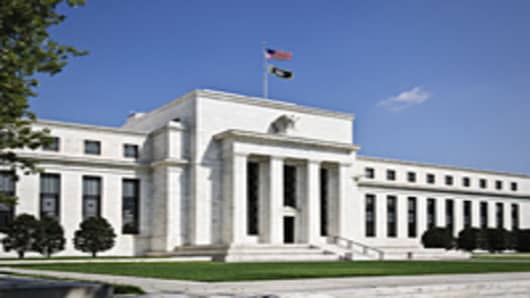Economists' consensus views are proving far too bullish. Last week, Goldman Sachs trimmed its year-end S&P 500 target from 1,500 to 1,450, still suggesting that the benchmark stock index could gain another 8.4%.
Other researchers offer similar targets. JPMorgan has a year-end target of 1,475. But will the index reach that target without further stimulus? One indicator suggests that it is possible. Despite weaker-than-expected economic data and growth and earnings downgrades of late, leading economic indicators are still on solid footing. The Conference Board gauge declined modestly in April, to 114, hurt by higher unemployment claims and fewer building permits.
Researchers forecast, on average, real GDP growth of 3.3% in the second quarter, 3.3% in the third quarter and 3.4% in the fourth quarter of 2011, followed by a modest tapering into 2012. First-quarter GDP, at 1.8%, showed that the pace of expansion fell markedly as a result of the Japanese earthquake disruption. Yet the national unemployment rate fell to 8.9% from 9.6% in the fourth quarter. There are other reasons to follow U.S. markets at this juncture.
Following QE1's conclusion, at the end of the first quarter of 2010, the S&P 500 suffered. According to David Rosenberg, the closely followed contrarian economist at Gluskin Sheff, between QE1's conclusion and Fed Chairman Ben Bernanke's hint that QE2 was impending, the S&P 500 shed 153 points, defensive sectors outperformed, corporate bond spreads widened, oil dropped from about $84 a barrel to $75 and the dollar strengthened, albeit marginally. The one commodity that outperformed was gold. A similar risk-off trade may be under way in the following weeks.
However, one thing is certain: The Fed is absolutely committed to ensuring economic growth. And since fiscal right-sizing is now inevitable, easy monetary policy may be necessary to offset budget cuts and the potential of entitlement reform and tax increases. In summation, interest rates, which are forecast to rise by 25 basis points during the first quarter of 2012, may need to stay low in order to ensure that the expansion persists. Whether QE3 is in the pipeline remains a topic of ongoing debate in the investment community. If so, a delay is likely.
Bernanke's QE2 was specifically designed to improve stock-market performance by creating a so-called wealth effect, by which investors gain paper profits and, presumably, spend more as a result. Differentiating between the correlation and causation of easing is challenging. But the stock market rallied 27% since QE2 rumors circulated in late August. However, the wealth effect may have had the unintended consequence of fueling commodity speculation. Oil, in particular, leaped from $75 a barrel to as high as $114 on the Nymex, and gasoline followed.
Pump prices have risen from as low as $2.68 to as high as $4 a gallon. Americans, extraordinarily reliant on cars, saw disposal income take a dive. Those with low incomes suffered a major inflation tax and, given that such individuals own few financial assets, they also missed out on the strong performance and intended wealth effect of U.S. capital markets. Populist politicians decrying inflation and posturing for votes have continued to criticize QE2, but their tone may soon soften if the economy falters.
Although the Fed is meant to be an independent and politically agnostic agency, the American public and politicians will no longer afford it that academic luxury. Recent moves, including the initiation of quarterly conferences, indicates that the Fed will increasingly embrace its role as a political body, and hold itself accountable to the views of the American people. Some fear this may compromise judgment while others view it as a critical step in restoring confidence in financial markets, which may seem opaque, even rigged, to average Americans.
Another thing is certain: without stimulus, we will finally learn which is the naturally occurring threat, inflation or deflation. Before QE3 can even be considered, deflation and slow growth will need to not only be irrefutable based on consumer and industrial prices, but be scaring Americans and political representatives. Only time will tell.
______________________________
Disclosures:
TheStreet's editorial policy prohibits staff editors, reporters and analysts from holding positions in any individual stocks.
______________________________
CNBC Data Pages:
______________________________
Disclosures:
TheStreet's editorial policy prohibits staff editors, reporters and analysts from holding positions in any individual stocks.
Disclaimer


